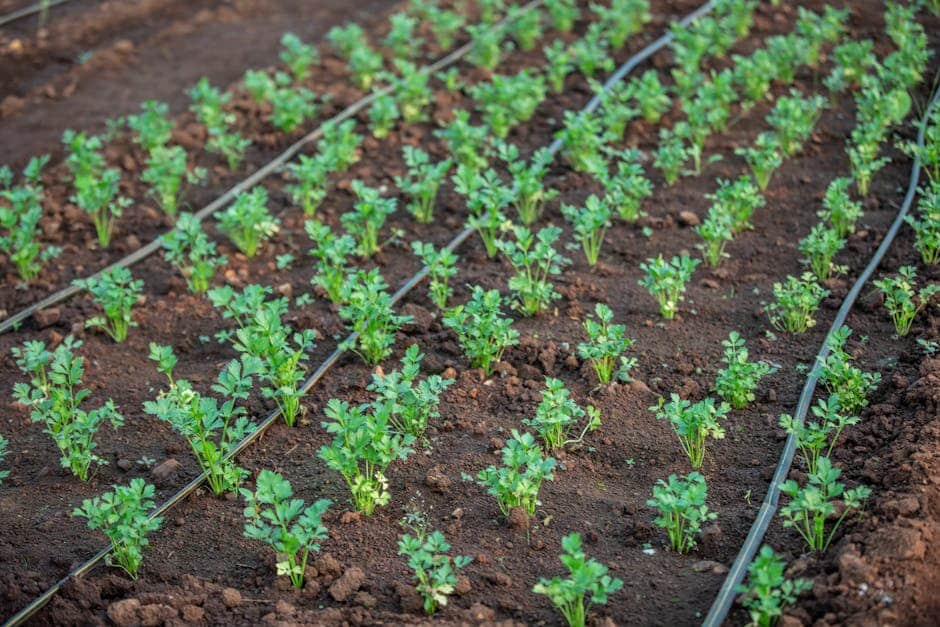Can Garden Soil be Effectively Used in Pots?
When it comes to container gardening, one of the most common questions is whether garden soil can be effectively used in pots. The answer to this question is not a simple yes or no, as it depends on various factors. In this article, we will explore the pros and cons of using garden soil in pots and provide you with the necessary information to make an informed decision for your container garden.
The Case Against Using Garden Soil in Pots
Several sources strongly advise against using garden soil in pots for container gardening. According to Gardening Know How, garden soil should not be used in pots. The same recommendation is echoed by Gardening Channel, The Potted Gardener, and Backyard Digs.
The main reasons cited against using garden soil in pots are poor drainage, compaction, and lack of essential nutrients. Garden soil is designed for outdoor use, where it can naturally drain excess water. However, when placed in pots, the lack of proper drainage can lead to waterlogged soil, causing root rot and other issues.
Furthermore, garden soil tends to compact more easily than potting soil. This can restrict root growth and oxygen availability, leading to stunted plant growth. Additionally, garden soil may lack the necessary nutrients required for potted plants, leading to nutrient deficiencies.
The Case for Using Garden Soil in Pots
Contrary to the majority opinion, Gardening Know How states that garden soil can be suitable for potted plants, but it may need to be amended with perlite and peat moss to increase porosity. This can help improve drainage and prevent compaction.
Using garden soil in containers has several potential benefits. Firstly, garden soil is usually free and can be easily replenished by adding kitchen scraps and compost, making it a cost-effective option. Additionally, garden soil packs well around plant roots, allowing them to develop a thick root base, which is beneficial for outdoor plants.
Furthermore, garden soil can be adjusted by adding natural amendments to improve nutrient content and soil structure. This allows you to tailor the soil to the specific needs of your plants, ensuring they receive the necessary nutrients for healthy growth.
Considerations and Potential Risks
While there are potential benefits to using garden soil in pots, it’s important to consider the risks as well. According to Smart Garden Guru, garden soil may contain insect eggs that could hatch indoors. This can lead to pest infestations in your home or other indoor spaces where the containers are placed.
Additionally, the composition of garden soil can vary depending on location and amendments. This means that the nutrient content and pH levels may not be ideal for potted plants. Regular testing and amendments may be necessary to maintain optimal soil conditions.
Another consideration is the potential introduction of pests and diseases. Garden soil can harbor pathogens and pests that can harm your potted plants. It’s important to ensure that the soil is free from any contaminants before using it in your containers.
Conclusion
In conclusion, the use of garden soil in pots for container gardening is a topic of debate. While several sources strongly advise against it, some suggest that with the right amendments, garden soil can be suitable for potted plants. Ultimately, the decision depends on your specific circumstances and preferences.
If you choose to use garden soil in pots, it is important to address the potential issues such as poor drainage, compaction, and lack of essential nutrients. Amending the soil with perlite and peat moss, as well as regularly testing and amending nutrient levels, can help mitigate these risks.
Remember to consider the potential risks associated with using garden soil, such as insect infestations and the introduction of pests and diseases. Taking preventive measures, such as inspecting the soil and treating it if necessary, can help protect your plants.
Related Websites:
FAQs:
Q: What is the difference between garden soil and potting mix?
Garden soil is typically used for outdoor gardening and contains natural ingredients like clay, silt, and sand. Potting mix, on the other hand, is specifically formulated for potted plants and has a lighter texture, improved drainage, and better water-holding capacity.
Q: What are the challenges of using garden soil in pots?
Using garden soil in pots can lead to poor drainage and compaction, restricting root growth. Its lack of proper aeration can also negatively impact potted plants.
Q: What are the advantages of using potting mix for pots?
Potting mix offers improved drainage and aeration, providing optimal conditions for potted plants to thrive. There are also specialized potting mixes available that cater to specific plant needs.
Q: Can garden soil be effectively used in pots?
While garden soil may not be the ideal choice for pots, it can be used with certain adjustments. Amending it with organic matter and perlite can improve its texture and drainage. Regular monitoring and adjustments are necessary to ensure the health of potted plants.
Q: Why is it important to use the right soil for potted plants?
Using the right soil, such as potting mix, is crucial for potted plants as it provides optimal conditions for growth, including proper drainage, aeration, and nutrient availability. It helps prevent compaction and allows roots to develop healthily.






